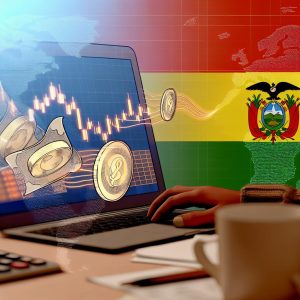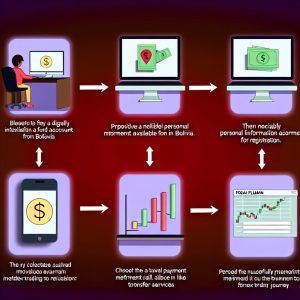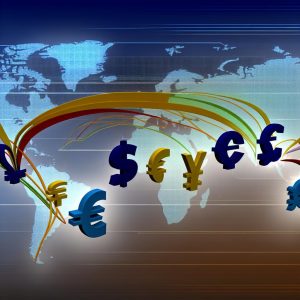Trading the Boliviano (BOB) in the Forex Market
Understanding the Boliviano (BOB) in Forex Trading




The Boliviano (BOB) is the official currency of Bolivia, and engaging with it in the Forex market offers a unique blend of opportunities and challenges. To trade the Boliviano effectively, a trader must be well-versed in its economic and political backdrop. This involves understanding the various factors influencing its value and the dynamics of the currency in the market.
Economic Overview of Bolivia
Bolivia’s economy is characterized by its heavy reliance on natural resources. Among these are natural gas and minerals such as zinc and silver, which play a significant role in shaping the country’s GDP. The economic growth driven by these resources is often volatile, given the global fluctuations in commodity prices. Consequently, individuals interested in trading the Boliviano need to stay informed about global commodity trends and how these could impact the value of the currency.
The economic structure of Bolivia is also defined by efforts to diversify beyond natural resources, though progress in this regard has been gradual. Sectors such as agriculture and manufacturing are emerging, but they still lag behind the dominant extractive industries. A deeper understanding of these dynamics is essential for Forex traders looking to engage with BOB, as shifts in economic focus could have long-term effects on the currency.
Central Bank and Monetary Policy
The Central Bank of Bolivia is pivotal in maintaining the Boliviano’s stability. It does so by implementing policies related to interest rates and controlling inflation. Such actions are crucial for traders, as any changes in these monetary policies can directly influence the Boliviano’s exchange rates. Prioritizing stability often guides the bank’s approach, though these measures can sometimes result in the currency experiencing lower liquidity in the Forex market.
Regularly examining the Central Bank’s reports and announcements can provide traders with insights into potential changes in the currency’s direction. Understanding the central bank’s stance on inflation and economic growth enables traders to anticipate currency shifts more accurately.
Factors Affecting the Boliviano’s Value
The Boliviano’s performance in the Forex market is influenced by a variety of factors, some of which are complex and interrelated. Understanding these elements is essential for any trader looking to engage in Boliviano trading.
Exchange Rate Regime
In Bolivia, the Boliviano operates under a managed float exchange rate system. This means that both market forces and government interventions influence the currency’s value. Understanding this delicate balance is vital for traders because it significantly impacts their trading strategies. A managed float system suggests that while market supply and demand factors are at play, governmental policies can intervene to maintain favorable exchange rates or counteract unwelcome market volatility.
Inflation Rates
Inflation is a key factor that affects the purchasing power of the Boliviano. Keeping an eye on inflation trends within Bolivia can help traders make better trading decisions, as inflation influences currency valuation. A country experiencing high inflation levels typically sees depreciation in its currency, whereas low inflation rates can help preserve a currency’s strength.
Political Stability
The political climate in Bolivia also plays a significant role in the valuation of the Boliviano. Political events, stability, or uncertainty within the country have the potential to sway the currency’s strength. Political stability usually supports stronger currency valuations, while political uncertainty can result in currency depreciation. Therefore, traders must stay informed about the political developments, including elections, policy changes, and social unrest, which can all impact the market perceptions and, subsequently, the currency value.
Challenges of Trading BOB
While there are opportunities in trading the Boliviano, there are several challenges that traders must navigate. Recognizing and planning for these challenges can help traders formulate a comprehensive trading strategy.
One major challenge is that as a non-major currency, the Boliviano generally experiences higher spreads and lower liquidity compared to the major currencies. This often necessitates traders to assume larger position sizes to achieve similar profit margins, which inherently involves greater risk.
Limited Accessibility
Another challenge comes from the Boliviano’s limited accessibility. As an exotic currency within the Forex market, not all brokers offer trading pairs with the Boliviano, and those that do may present traders with limited options. This restriction is compounded by the typically slower spread and trade execution times associated with less-liquid currencies. Traders interested in the Boliviano need to seek out brokers specializing in exotic currency pairs or consider alternative financial instruments such as futures or options for exposure.
Conclusion
Trading the Boliviano within the Forex market necessitates a deep comprehension of Bolivia’s economic and political landscape. Traders must consider factors such as the nation’s monetary policies, economic stability, commodity dynamics, political factors, and more. Despite its inherent challenges, such as limited access and higher trading spreads, the Boliviano provides a distinct opportunity for those who wish to delve into lesser-traded currencies. Traders who thoroughly understand the intricacies and seize the unique opportunities presented by BOB trading can make informed decisions, thus optimizing their trading strategies in this niche market.
This article was last updated on: April 28, 2025





